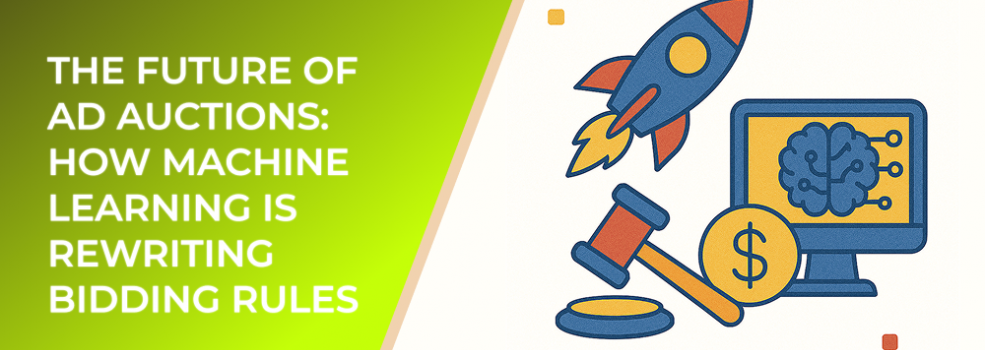Ad auctions determine which ads are shown to users and at what cost. Traditionally, auctions were heavily influenced by manual bidding strategies and simple rules such as maximum bid and ad relevance score. Today, with the rise of machine learning, the process is far more dynamic.
According to eMarketer, over 80% of digital display ad spending in 2024 was transacted through programmatic channels—most of which are powered by machine learning. This signals a clear shift from human-controlled decisions to algorithm-driven optimization.
How Machine Learning Changes the Game
1. Real-Time Bid Adjustments
Machine learning models analyze user behavior, context, and historical data in milliseconds to decide how much to bid. This reduces wasted ad spend and maximizes return on investment (ROI).
2. Predictive Audience Targeting
Instead of static audience segments, machine learning predicts which users are most likely to convert at any given moment. Studies show that campaigns using predictive targeting see 20–30% higher conversion rates compared to traditional targeting.
3. Automated Budget Allocation
Budgets are now distributed dynamically across ad sets, placements, and even platforms. Machine learning ensures spend flows to the most effective opportunities in real time.
4. Quality Scoring Beyond Clicks
Previously, relevance scores were based largely on CTR (click-through rate). Now, machine learning incorporates signals like engagement, conversions, and lifetime value to reward ads that drive long-term outcomes.
Benefits of Machine Learning in Ad Auctions
-
Greater Efficiency: Algorithms evaluate millions of variables simultaneously, something humans cannot achieve.
-
Scalability: Advertisers can run campaigns across multiple channels without micromanaging every bid.
-
Better ROI: Automated optimization ensures that each dollar is more likely to reach high-value prospects.
Challenges to Consider
-
Transparency: Many platforms act as “black boxes,” leaving advertisers unsure how decisions are made.
-
Data Dependency: Machine learning needs large amounts of quality data to perform effectively.
-
Loss of Manual Control: Some advertisers may feel uncomfortable handing over bidding power entirely to algorithms.
Preparing for the Future
Marketers should embrace machine learning while maintaining oversight through:
-
Continuous creative testing to feed platforms with quality input.
-
Monitoring campaign performance beyond surface metrics.
-
Diversifying strategies across platforms to avoid overreliance on one ecosystem.
Conclusion
The future of ad auctions lies in machine learning-driven automation. While advertisers may lose some manual control, the gains in efficiency, accuracy, and ROI outweigh the trade-offs. By combining algorithmic bidding with human creativity and strategy, marketers can thrive in the new era of digital advertising.

